
Climate change and
loss of biodiversity
Human induced climate change, loss of biodiversity and weakened ecosystems are now threatening the foundations of our civilizations. Policy decisions made in the next few years will be critical. Halting the destruction and fragmentation of forest ecosystems as well as restoring and protecting the world's forests is fundamental; not in the least to strengthen the resilience of the ecosystems during a period when the climate gets increasingly extreme. In a time when reduction of emissions and safeguarding every possible carbon sink and carbon storage is critical, the Swedish forestry continuously moves large amounts of carbon out of the forests and into the atmosphere: Prevailing logging methods cause large greenhouse gas emissions.
Photo: Björn Olin
The forest heritage
in the North!
Sweden harbors an important part of the EU's natural heritage. The Swedish forest landscape is diverse and contains several areas of habitat types protected under the Habitats Directive, many of which are still unprotected, from the Western taiga with primary- and old-growth forests and naturally regenerated continuity forests, to the Fennoscandian hemiboreal natural old broad-leaved deciduous- and beech forests. The Scandinavian Mountains Green Belt, largely situated within the borders of Sweden, is a unique natural heritage from a European as well as international perspective. The unprotected forests with high conservation values in Sweden are critical to maintain biodiversity, protect ecosystem functions and contribute to climate change mitigation.

Sweden's government cuts down the forest protection.
Despite the dire situation for the forest, the Swedish government that was installed last year, sharply reduced the budget for protection of nature with high conservation values as well as dismantled many climate initiatives. During the first half of 2023 Sweden holds the EU presidency. Meanwhile, lobbying from the Swedish forest industry and the government is aggressive and scientists now warn that “Sweden threatens European biodiversity” as they threaten to weaken or stop important legislative initiatives at the EU level. It is clear that Sweden is fighting to defend “The Swedish Forestry Model”, with clear-cuts as the predominant method. This raises concerns that the urgent needs for tackling the nature crisis in general, and specifically forest ecosystem, will not be adequately addressed.
Photo: Viktor Säfve

Photo: Jon Andersson
The urgency of the situation should not be underestimated. With today's rapid logging rate, scenarios and estimates made by researchers, authorities and experts indicate that most of the remaining continuity forests and conservation values forests, outside nature conservation areas, will be lost within approximately one to a few decades.
We need healthy ecosystems to safeguard the fundamental conditions of our societies. We must preserve what's left and restore what's damaged.
If you are a scientist in the relevant field (Biology, forestry, forest ecology, climate, etc.), or an NGO - Join us in our campaign to Protect the Forest.
This call is directed to the government and parliament of Sweden. It is also an appeal for the EU-commission to withstand the pressure from Sweden and continue the processes of forming progressive legislation and strategies that aims to combat the nature and climate crises and strengthen forest ecosystems.
Join us in our campaign
Photo: Björn Olin
The appeal
Protect EU's natural heritage
in the North!
Our demands to Sweden are:
1
Implement an immediate logging moratorium in all forests with identified conservation values. These include (1) old-growth and primary forests and verified continuity forests (2) woodland key habitats and other forests with documented high conservation values (designated in municipal plans, via SIS-standard, or similar), (3) areas classified by the Swedish Environmental Protection Agency (SEPA) as core areas which are of great importance for plants and animals, (4) pendulous lichen-rich forest important for the Sámi community, and (5) all unprotected forest habitat types protected under the Habitats Directive. These five categories may in many cases overlap. Even though there is a lack of comprehensive data on all existing areas with high conservation value, the moratorium can be implemented immediately for the known areas using today's knowledge. A moratorium would secure all known conservation value forest until strict protection is in place.
2
Protect and restore forests in line with EU species and habitats directives, biodiversity- and forest strategy and the CBD-framework by 2030. In line with the EU biodiversity strategy, EU directives and international agreements, at least 30 percent of the productive forest land should be protected, especially areas of particular importance for biodiversity and ecosystem functions and services. They need to be ecologically representative, well-connected, and equitably governed systems of protected areas. Today, only about 6 percent of the Swedish productive forest has long-term, quality assured and transparent protection; however, the productive forest land hosts the most diverse nature types and provides habitats for the majority of the red listed forest species. The target must be achieved by 2030 and be well-distributed across the different forest regions. To achieve a functional protection of 30 percent, significant restoration efforts are required for large areas. - All forests with identified conservation values must be protected. The protection needs to be transparent, long-term, and based on the preservation of large, coherent forests of high quality. Protected areas should include all remaining primary and old-growth forests and all other forests with conservation values. - Also, all forests mapped with remote sensing as potential continuity forest or forest with conservation values must be mapped in the field by SEPA. Where the field surveys confirm conservation or restoration values the area should be protected from logging. - Sweden's state-owned forest should be used as one of several tools to meet the target of protection. - In addition to protection, to enhance biodiversity, ecosystem functions and services, ecological integrity, and connectivity in the forest landscape, there are major restoration needs. Efforts should be made to target degraded forests and those forest types which have the highest need for restoration. Successful restoration efforts would result in an increase of the protected areas.
3
Protect the Scandinavian Mountains Green Belt. The belt of subalpine and montane forest with conservation values along the Swedish mountains must be preserved in its entirety. This is one of the few remaining large European intact forest landscapes and a unique opportunity to protect entire resilient ecosystems at landscape level. It is a key tool for retaining boreal biodiversity, ecological legacies, ecosystem services, adaptive capacity and resilience, which need to be safeguarded for the future.
4
Transform forestry to a close-to-nature management model. Forestry needs to transform from today's dominating methods with clear-cutting and tree plantations, to a close-to-nature forest management. The transition must start immediately, with clear, time-bound targets, knowledge-sharing hubs and capacity building, and economic incentives for landowners. A close-to-nature forest management seeks to work with and protect the natural processes; promoting a self-organized ecosystem that fosters heterogeneity, biodiversity, resilience and adaptive capacity. It will improve the ability for forestry to preserve biodiversity, maintain and restore resilient forests, adapt to climate change and continue to deliver various ecosystem services well within the planetary boundaries. A shift to close-to-nature forestry is well in line with both the EU forest strategy and the proposed EU nature restoration law. Introducing close-to-nature forest management does not reduce the current need for forest protection. No forestry, regardless of forestry method, should therefore be carried out in conservation value forests that need urgent protection.
5
Constrain wood use within planetary boundaries. In the current environmental crisis, the government needs to ensure that consumption and production of biomass are constrained by planetary boundaries. About 80 % of Sweden´s harvested biomass is used for short-lived products such as bioenergy, cardboard and paper. In addition, paper and pulp products are very energy-intensive to make: the forest industry is responsible for almost half of Sweden´s industrial energy use. Already, the demand for wood products far exceeds supply and the need to constrain and for prioritization is urgent. It is important to be explicit on how wood products are promoted through policy: Long-lived products must be prioritized before short-lived and disposable. Short-lived products and bioenergy from forest biomass must not be subsidized. The circularity of wood products, incentivizing re-use, and recycling need to increase drastically. The production needs to be energy efficient. To properly achieve a circular economy Sweden needs to implement the cascading principle, as pointed out in the EU Forest Strategy.

Photo: Stig Björk

An in-depth assessment by the Swedish Forest Agency, of the environmental quality objective pertaining to forests shows an unsatisfactory ecological condition. It concludes that in recent years, despite efforts to improve the ecological status of forest ecosystems, the trend is negative. Moreover, 14 of 15 forest habitats listed under the Habitats Directive do not have a favorable conservation status, and the conservation status of 10 out of 11 woodland-living priority species of invertebrates is “bad”, with the remaining one listed as “inadequate”. About 2000 forest-dwelling species are red-listed. To conclude, most measures of the state of the forest ecosystem depict an alarming situation for biodiversity and ecosystem health in Sweden.
State of alarm for
Sweden's forests
Photo: Jon Andersson

The Sámi and the forest
In the north, the Sámi culture, including the reindeer husbandry, are dependent on the forest for their livelihoods. One of the major threats for Sámi culture is loss of habitat due to direct or indirect impacts from competing land use, such as commercial forestry. The forest provides shelter, food and materials for Sámi handicrafts. Especially the on-going clear-cut forestry aggravates the condition for the reindeer husbandry by destroying habitats for tree living beard lichens which is the second most important food resource for the reindeer. Also, forestry and its infrastructure have significantly reduced the area of old spruce forest, that can give relief for the reindeers from heat and insects. Forestry methods such as soil scarification and the use of fertilizers also have a large negative impact on the ground lichens, the primary food resource for the reindeer. During a period of 60 years the lichen-abundant forest land in the Swedish boreal landscape has declined by 70 %. The right to Free, prior and informed consent (FPIC) by the Sámi people is a prerequisite to ensure respectful harvest conditions that protect traditional subsistence living but also biodiversity and ecosystems.
Photo: Jon Andersson

Multiple-use and
ecosystem functions
Natural and near-natural forests do not only harbor a rich biodiversity, they also store large amounts of carbon and are vital for a wide range of ecosystem functions. They are also important for the multiple-use of the forest such as recreation, wild berry production, ecotourism and much more. The ecosystem services of the forests, where wood production is only one of many, are essential for our existence. Therefore, increased protection and restoration of forests and a transformation of the forestry is not only important for climate change and biodiversity, it is also an economic investment. Almost all managed forests in Sweden are harvested with clear-cuts, followed by the most common regeneration method: plantation of spruce or pine stands. The Swedish forestry model has converted the majority of the forest ecosystems to managed tree stands and tree plantations. A transformation of today’s intensive forestry into close-to-nature forest management is fundamental, primarily to strengthen biodiversity and ecosystems, but secondly to build resilience and store carbon to combat climate change. Moreover, all remaining near-natural and natural old forests and forests with long continuity (continuity forests) and conservation values urgently need protection as they are crucial for protecting biodiversity and contain large carbon stocks. Logging levels have to be reduced in order to preserve and increase the forest carbon stock and carbon sink. Also, future products made from forest biomass must be more climate friendly than today.
Photo: Viktor Säfve
Dictionary
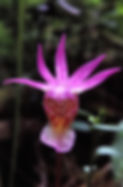
Photo: Stig Björk
Biodiversity
Biodiversity is the total variety of life on earth, or in a smaller area. One measure of biodiversity is a count of species, but one may also examine the diversity above species level, and the genetic diversity within species. Another aspect is the different ways in which species may combine to form ecosystems, and whether the species present are generalist species common in large areas, or rare, specialist species. Biodiversity has arisen through many millions of years of evolution. Much of biodiversity is invisible to us, such as single-celled organisms or the rich web of life in the soil, and yet, it is vital for the processes that ensure our survival.
According to the Intergovernmental Science-Policy Platform on Biodiversity and Ecosystem Services (IPBES): "Biodiversity – the diversity within species, between species and of ecosystems – is declining faster than at any time in human history," and "Nature across most of the globe has now been significantly altered by multiple human drivers, with the great majority of indicators of ecosystems and biodiversity showing rapid decline.".
Carbon storage and carbon sinks
A carbon stock (or storage) is the amount of carbon which is contained in some system, for example the sea, a forest, or a building. A carbon sink is a system which currently takes up carbon. A carbon source, conversely, emits carbon.
Studies show that tree plantations, in general, store less carbon than the former old natural forest, regardless of geographic region.
An old forest has a large carbon stock. Besides the trees, large amounts of carbon are stored in the soil, enhanced by the fungal networks. Disturbances such as fires or storms may affect the amounts of carbon in an old forest, but undisturbed, it may continue to build up carbon for centuries. Studies have shown that old-growth forests both store a lot of carbon, and can be large carbon sinks.
An appeal signed by more than 500 scientists addressed to the EU underlines the importance of understanding the difference between carbon debt, carbon stocks and carbon flows: "Forests are important for mitigating climate change…because of the amount of carbon that is already stored in living biomass, dead biomass and, particularly in boreal forests, in soil.". They also write: "Harvesting reduces the amount of stored carbon and therefore increases the amount of carbon dioxide in the atmosphere. Any claim to the contrary is simply wrong...", and: "All carbon uptake in managed forest is therefore a payback of the historical carbon debt.".

Photo: Viktor Säfve
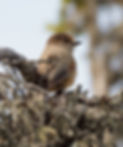
Photo: Jon Andersson
CBD and the Kunming-Montreal Global Biodiversity Framework 2030-Targets
Scientists state that: Sweden does not meet agreed national and international forest biodiversity targets. Sweden was far from reaching the Aichi targets within the CBD by 2020, and is even further from reaching the new, more ambitious targets that were put forward under the Kunming-Montreal Global Biodiversity Framework.
Scientists state that: "Protected areas are the cornerstone of biodiversity conservation, and studies document that well-managed reserves are far more effective in safeguarding biodiversity than are other forms of land use”, and that: "Opportunities to address both climate change and the extinction crisis are time bound. ”.
The new, and for forest biodiversity relevant, targets for 2030, as part of the United Nations Convention on Biological Diversity (CBD), are:
Target 1: Ensure that all areas are under participatory, integrated and biodiversity inclusive spatial planning and/or effective management processes addressing land- and sea‑use change, to bring the loss of areas of high biodiversity importance, including ecosystems of high ecological integrity, close to zero by 2030, while respecting the rights of indigenous peoples and local communities.
Target 2: Ensure that by 2030 at least 30 per cent of areas of degraded terrestrial, inland water, and marine and coastal ecosystems are under effective restoration, in order to enhance biodiversity and ecosystem functions and services, ecological integrity and connectivity.
Target 3: Ensure and enable that by 2030 at least 30 per cent of terrestrial and inland water areas, and of marine and coastal areas, especially areas of particular importance for biodiversity and ecosystem functions and services, are effectively conserved and managed through ecologically representative, well-connected and equitably governed systems of protected areas and other effective area-based conservation measures, recognizing indigenous and traditional territories, where applicable, and integrated into wider landscapes, seascapes and the ocean, while ensuring that any sustainable use, where appropriate in such areas, is fully consistent with conservation outcomes, recognizing and respecting the rights of indigenous peoples and local communities, including over their traditional territories.
Target 4: Ensure urgent management actions to halt human induced extinction of known threatened species and for the recovery and conservation of species, in particular threatened species, to significantly reduce extinction risk, as well as to maintain and restore the genetic diversity within and between populations of native, wild and domesticated species to maintain their adaptive potential, including through in situ and ex situ conservation and sustainable management practices, and effectively manage human-wildlife interactions to minimize human-wildlife conflict for coexistence.
Target 10: Ensure that areas under agriculture, aquaculture, fisheries and forestry are managed sustainably, in particular through the sustainable use of biodiversity, including through a substantial increase of the application of biodiversity friendly practices, such as sustainable intensification, agroecological and other innovative approaches, contributing to the resilience and long-term efficiency and productivity of these production systems, and to food security, conserving and restoring biodiversity and maintaining nature’s contributions to people, including ecosystem functions and services.
Target 11: Restore, maintain and enhance nature’s contributions to people, including ecosystem functions and services, such as the regulation of air, water and climate, soil health, pollination and reduction of disease risk, as well as protection from natural hazards and disasters, through nature-based solutions and/or ecosystem-based approaches for the benefit of all people and nature.
Clear-cuts, logging levels and CO2 emissions
Research shows that reduced logging levels provide large climate benefits coming decades. The time factor is important - the next few years will be critical, if we are to reach international climate- and environmental targets, mitigate negative climate effects and avoid exceeding so-called "tipping points".
The most effective way to mitigate climate change is to avoid emissions of carbon, and to preserve and enhance the natural carbon stocks and carbon sinks. Emissions must be rapidly reduced from both fossil and biogenic sources.
Clearcutting emits large amounts of greenhouse gases.
Scientists and experts points out that we cannot wait for the trees that replace the forests being clear-cut today to grow back and rebind all the carbon. Exceeding 1.5°C global warming could trigger multiple climate tipping points. Planetary boundaries have already been overstepped.

Photo: Björn Olin
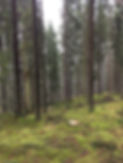
Photo: Xavier de Maupeou
Close-to-nature forest management
The EU’s forest strategy for 2030 clearly states that forest management systems like clear-cutting should only be used in duly justified cases since it affects above ground biodiversity, and causes the loss of carbon in the roots and part of the carbon in the soil.
The clear-cut and planting model, and the industrial tree stand forest landscape that is the result of this management, is according to a forest ecologist: “in contradiction with the variable and complex characteristics of the disturbance-succession cycle observed in naturally dynamic forests with negligible human impact”.
Also, the forest ecologist stated that: "In particular, the generalization that the boreal forest is regulated by fierce stand-replacing disturbances, leading to the dominance of even-aged stand successions, has been disproved. However, this misconception has, until now, been repeated and used to legitimize the dominant practice of clear-cutting as a nature-based way to manage the forest."
To tackle negative climate effects, biodiversity loss in forest landscapes, and increase resilience and resistance, there is an urgent need for a transition to a forest management model based on: “naturally emerging self-organized ecosystem dynamics that foster heterogeneity, biodiversity, resilience and adaptive capacity.”
Following the general principles for a Close-to-nature forest management, all forest management must meet following guidelines:
- Use unmanaged forests with a natural dynamic, shaped by natural processes and disturbance regimes, as reference areas. Management methods should be adapted to the natural forest dynamics so that, to the greatest extent possible, natural processes create a heterogeneous forest landscape. Reference areas can show if forestry is moving towards or away from an increased natural dynamic development in the managed forests. A Close-to-nature forest management should be as close to the reference areas as possible, while extraction of valuable timber and other values from the forest is possible.
- Preserve and restore natural processes and functions of forest ecosystems. To ensure a resilient forest landscape, natural processes and functions of ecosystems must be preserved. These are, in many cases, regulating and supporting ecosystem services such as biogeochemical cycles as well as climate and water regulation.
- Preserve and restore structural complexity of forest ecosystems. Forestry practices must ensure sufficient nature consideration to preserve and restore structures, such as the amount and type of dead wood, old trees and wetlands.
- Preserve and restore natural tree species composition and diversity of forest ecosystems, both at a stand- and landscape scale. Trees form the basis of forest ecosystems by directly providing habitats and affecting biophysical conditions. Therefore, forestry should only use native tree species that, as far as possible, are naturally regenerated.
- Apply a landscape perspective. Planning should be done at a forest stand level as well as at a landscape level to ensure connectivity and to preserve and restore the natural variation in the forest landscape.
- Be based on best, and adapted to, new knowledge and experiences. Forestry should continuously be adapted to new research findings as well as practical experience.
Connectivity, functionality and representativeness
International targets and the national environmental objectives emphasize functionality, connectivity and representativeness in the work with forest protection. CBD states that: "especially areas of particular importance for biodiversity and ecosystem functions and services, are effectively conserved and managed through ecologically representative, well-connected and equitably governed systems of protected areas and other effective area-based conservation measures". This is supported by science highlighting that: “Ignoring representativeness and connectivity exaggerates green infrastructure functionality.”
In order to reach national and international environmental targets it is crucial that the protection is ecologically representative. It is therefore not possible to include, for example, tree-covered bogs in the statistics for protected productive forest. Preservation of the forest biodiversity will not be reached by adding quantitative figures, including different forms of forest land that's not currently under commercial forestry operation. Since productive forest is subject to logging, it is urgent that the areas of high conservation values are protected. Also, protection of the productive forest is very important for biodiversity.

Massive clear-cutting and fragmentation leads to reduced connectivity for species linked to natural and near-natural forests. The animation shows the distribution of species throughout the landscape. Bright red and yellow colors show where species have been thriving and spreading. The black areas, which have become more dominant, show where the species have increasingly difficulty to live and spread. The change is a consequence of clear- cutting and the lack of natural forests.
Animation: Forestinsight.

Photo: Viktor Säfve
Continuity forest
Continuity forest is defined by the Swedish Forest Agency (2011) as: “A forest that has natural values whose occurrence is explained by the fact that for a long time there have been suitable forest habitats and substrates in this particular forest or in its vicinity“.
The definition includes forests that have never been clear-cut and includes the majority of all forests (particularly in the northwest of Sweden) generated before clear-cutting was introduced as common practice, and on a large scale.
Many species are associated with continuity forests, and these forests have a unique biological diversity. The Swedish Species Information Center at the Swedish University of Agricultural Sciences states that: "Lack of continuity forests, i.e. forests that have never been clear-cut, is one of the main reasons why forest-dwelling species are listed on the Red List." and that: "In order to reverse the trend of declining populations, unprotected forest environments, with habitats for red-listed species, need to be preserved in the long term throughout the country.".
Mapping of
continuity forest
Sweden holds a large part of the EU's remaining continuity forests. With today's rapid logging rate, scenarios and estimates made by scientists, authorities and experts indicate that most of the remaining continuity forests and old forests with conservation values, outside nature conservation areas, are at risk of being lost due to logging activities within approximately one to a few decades.
The total area of potential continuity forest in the boreal region of Sweden has been mapped with remote sensing by Metria commissioned by the Swedish Environmental Protection Agency (SEPA). Metria and SEPA have also published refined mapping of continuity forest in the subalpine and montane forest, and in the counties of Jämtland, Västerbotten and Västernorrland.
Today, the remote sensing of continuity forests and old forests also include some areas of secondary forest, so they will need further quality control and revision.
Metria's first mapping presented a relatively large overestimation of the total area of continuity forest. This is due to, among other things (such as method errors), the fact that in the boreal region there is a partly diversified history of forest use. A minor study has indicated that clear-cutting occurred in one eastern part (near forest industries) of the boreal region as early as the beginning of the 20th century. While in other parts of the boreal region, in the northwest, clear-cutting was probably introduced as common practice, on a large scale as late as in the 1950s.


Photo: Viktor Säfve
Core areas
A core area [värdekärna] is a mapped forest area with high conservation values of major significance for the flora and fauna. Core areas vary in size, from small forest stands to areas of several hundred hectares. WKH and other areas with conservation values are included. A core area can also be a forest area that is not classified as a WKH, but which has one or more of the characteristics of forests with high conservation values.
Ecosystem services
Ecosystem services are a way of describing the value of ecosystems for humans in terms of the services they provide us. Such services can be the production of goods such as, in the case of forests: timber, berries, or meat from game animals. They can also be the maintenance of functions such as water regulation, air purification, and pollination from insects. The services can also be of a cultural nature, such as knowledge, aesthetics, or the psychological well-being one can experience in the forest. An example of the value of ecosystem services is the clean water supply of New York, secured by protecting forests and other ecosystems that filter the water, in the absence of which an expensive water treatment plant would have been needed. The Intergovernmental Science-Policy Platform on Biodiversity and Ecosystem Services (IPBES) estimates that loss of ecosystem services from destruction of ecosystems costs us 10 % of the global GDP, and we risk worse loss in the future.

Photo: Stig Björk
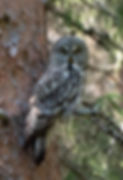
Photo: Jon Andersson
The EU biodiversity strategy
The following commitments in the EU biodiversity strategy are related to forest and forest protection:
1. Legally protect a minimum of 30% of the EU’s land area and 30% of the EU’s sea area and integrate ecological corridors, as part of a true Trans-European Nature Network.
2. Strictly protect at least a third of the EU’s protected areas, including all remaining EU primary and old-growth forests.
3. Effectively manage all protected areas, defining clear conservation objectives and measures, and monitoring them appropriately.
The EU Nature Directives
The EU Birds and Habitats directives, known as the Nature Directives, form the cornerstones of the EU’s nature protection policy. The two directives imply that several species and habitat types are covered by a common system of protection, with requirements of regular monitoring and reporting. The overall objective is to ensure that protected species and designated habitat types are maintained, or restored to a favourable conservation status throughout their natural range within the EU.
Sweden’s reporting on the ecological status on forest habitats according to the EU Habitats Directive, shows an overall unfavourable conservation status. Out of 15 forest habitat types, 13 are estimated to have inadequate or unfavourable conservation status in all regions where they occur. Only in the alpine region, two forest habitat types are classified as having a favourable conservation status.
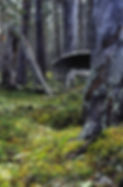
Photo: Stig Björk

Photo: Jon Andersson
Favourable conservation status
Favourable Conservation Status describes the situation in which a habitat or species is thriving throughout its natural range and is expected to continue to thrive in the future. It includes all occurrences of a habitat or species, both those in the wider environment and those in protected areas.
The concept is used in the EU Habitats Directive. The official definition for a species is that "conservation status will be 'favourable' when: 1) population dynamics data on the species concerned indicate that it is maintaining itself on a long-term basis as a viable component of its natural habitats, 2) the natural range of the species is neither being reduced nor is likely to be reduced for the foreseeable future, and 3) there is, and will probably continue to be, a sufficiently large habitat to maintain its populations on a long-term basis."
The official definition for a habitat types is that "the conservation status of a natural habitat will be taken as 'favourable' when: 1) its natural range and areas it covers within that range are stable or increasing, 2) the specific structure and functions which are necessary for its long-term maintenance exist and are likely to continue to exist for the foreseeable future, and 3) the conservation status of its typical species is favourable.".
Green infrastructure
Green infrastructure has been defined as: “A strategically planned network of natural and semi-natural areas with other environmental features, designed and managed to deliver a wide range of ecosystem services, while also enhancing biodiversity.” Such services include, for example, water purification, improving air quality, providing space for recreation, as well as helping with climate mitigation and adaptation. This network of green (land) and blue (water) spaces improves the quality of the environment, the condition and connectivity of natural areas, as well as improving citizens’ health and quality of life. Developing green infrastructure can also support a green economy and create job opportunities.

Photo: Jon Andersson

Photo: Anders Delin
National environmental targets
The national environmental quality objective "Sustainable Forests" states: "The value of forests and forest land for biological production must be protected, at the same time as biological diversity and cultural heritage and recreational assets are safeguarded."
The objective specifies, for example:
"The biodiversity of forests is preserved in all natural geographical regions and species have the opportunity to spread within their natural range as a part of a green infrastructure."
"Habitats and naturally occurring species associated with forest areas have a favourable conservation status and sufficient genetic variation within and between populations."
An in-depth assessment of Sustainable Forests carried out by the Swedish Forest Agency shows that “Sustainable Forests has not been achieved and will not be achieved with existing policy instruments and measures. Developments in the forest environment are negative”.
Formal protection is a crucial means to reach national objectives and international environmental targets. It can be in the form of nature reserves, national parks, smaller biotope protection areas, or legally binding agreements with landowners. As of today, Sweden has protected:
8.8 % of the forest land (with low-productive forest included).
5,8 % of the productive forest land.
3,5 % of the productive forest land below the montane forests.
Most of the protected forest (62 %) is thus located near the mountains. A further 5 % is voluntarily set aside. The set asides lack formal protection and are defined as: “
Conservation measure with limited duration”. There is a lack of knowledge about the set aside areas quality, location and long term protection.
Pendulous lichen-rich forest
Pendulous lichen-rich forests are often characterized by a significant amount of hanging tree lichens and older trees. The forests are often multi-layered and usually dominated by spruce, but in northernmost Sweden also by pine. Entire stands of older pendulous lichen-rich forests are today relatively uncommon, especially below the mountain forest.
For several species including lichens, insects and resident birds, these forests are very important. In the winter, the semi-domesticated reindeer kept by the Sámi need to eat lichen to survive. The tree hanging lichens are especially important in the winter when reindeer, due to ice crust, cannot dig through the snow to reach the lichen on the ground.

Photo: Jon Andersson

Photo: Viktor Säfve
Productive and low-productive forest
A Swedish forest is designated as productive if the annual timber growth is more than 1 cubic meter per hectare. Low-productive or unproductive forest often consists of wetlands or rocky ground sparsely covered with trees, or slow growing forest near the treeline in the mountains. Forestry is permitted in the productive forest, whereas large-scale forestry is not allowed in the low-productive forest. According to the Forestry Act: "Logging, forest management measures and fertilizing may not take place on forest impediments (low-productive forest land) that are larger than 0.1 hectares. Single trees may, however, be felled if it does not change the character of the natural environment.".
Red list
The International Union for Conservation of Nature’s Red List of Threatened Species, also known as the IUCN Red List, is the world's most comprehensive information source on the global extinction risk status of animal, fungi and plant species.
The IUCN Red List has assessments of the relative risk that various species have of becoming extinct on national and global levels. The risk is evaluated according to criteria from the International Union for Conservation of Nature. In Sweden, the Swedish Species Information Center is responsible for the red list. About 2 000 forest-living species are red listed. According to the Swedish Species Information Center, approximately 1,400 red-listed species are strongly negatively affected by logging. A recent assessment shows that out of the threatened forest living species, close to 400 are directly negatively affected by clear-cutting.
The Swedish Species Information Center writes in a report (2011) that: "Sweden's forest landscape is being transformed from pristine or extensively managed forests with great biological diversity to biologically more monotonous production forests. These forests do not get very old (before being clear-cut again/our remark) and are less varied in tree age, tree species and structures (they also contain smaller amounts of dead wood). This changes the conditions for the forest's plants, fungi and animals. Some benefit, but significantly more are disadvantaged.", and: "Since 1950, approx. 60% of Sweden's productive forest land has been clear-cut and converted to production forests. In addition to this, comes clear-cuts from further back in time.".

Clear-cutting causes massive fragmentation of continuity forest habitat, natural and near-natural forests. Here you see the large municipalities of Strömsund, Sollefteå and Ragunda.
Animation: Forestinsight.
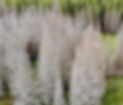
Photo: Viktor Säfve
Resilience and Resistance
Resilience, also called robustness, is the ability of an ecosystem to maintain and regain its previous state during and after disturbance. The word is often used in connection with climate change, since we would like natural ecosystems to have this quality when disturbed by global climate change. Aside from higher temperature, disturbances such as storms, diseases, fire, and drought are likely to become more common with climate change.
CBD defines resilience as: “The capacity of an ecosystem to return to the pre-condition state following a perturbation, including maintaining its essential characteristics taxonomic composition, structures, ecosystem functions, and process rates.“.
Resistance is defined as: ”The capacity of the ecosystem to absorb disturbances and remain largely unchanged.“.
The Scandinavian Mountains Green Belt
Near the Scandes, the mountain range running north-south in Scandinavia, there is a more than 800 km long belt of montane (or subalpine) forest, relatively untouched by forestry. It is a area with concentrations of primary and old-growth forests. This landscape is a very valuable natural heritage on a European level, and could be called the Amazon of Scandinavia. Scientists delineated the Scandinavian Mountains Green Belt as the largest intact forest landscape within the European Union.
In the 19th and early 20th centuries, timber was floated down the rivers to Sweden's east coast, and the western mountainous areas were difficult to log and to extract timber from. Even today, they are less accessible, which is why this forest belt has remained. 56 % of the montane forest (both productive and low-productive) is formally protected today. According to the Forestry Act, logging of high conservation value montane forests is not permitted. Despite this, in 2021 approximately 30 per cent of the applications for logging in this area were permitted. In order to protect biodiversity and maintain ecological processes, this north-south corridor, where species will be able to migrate to escape a warmer climate, must be preserved. Scientists state that: "the Scandinavian Mountains Green Belt is a key entity supporting ecological legacies, boreal biodiversity and ecosystem services, resilience and adaptive capacity, which needs to be safeguarded for the future.".
The Swedish EPA has mapped over 500,000 hectares of productive forest land with very high conservation values within or in close proximity to the border of subalpine forest. A government investigation (SOU 2020:73) suggests that: "...approximately 500,000-525,000 hectares of productive forest land, in the large contiguous natural forests within and in close proximity to the border of subalpine forest,…, long-term preservation must be ensured". This is motivated by, among other things the need: "...to preserve biological diversity at the highest level, ecosystem diversity". Today, however, there are no government decisions for the protection of all this internationally valuable forest, nor sufficient funds.

Photo: Tor Tuorda
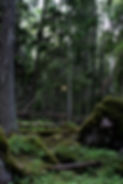
Photo: Viktor Säfve
Woodland key habitats (WKH)
According to the Swedish Forest Agency, WKHs are forest areas that, by an overall assessment of its ecological structure, species content, forest history and physical environment has a high importance for the forest’s flora and fauna today, and harbor or can be expected to harbor red-listed species .
WKHs were systematically mapped and registered by the Swedish Forest Agency and by the large forest companies during the 1990's and early 2000's. They were also registered when encountered in connection to authority supervision. There are still many undetected WKHs and further systematic inventories are needed.
WKHs do not have any legal protection, but within the voluntary forest certification FSC, they are prohibited to be logged. According to a recent governmental decision the Swedish Forest Agency no longer maps and registers new WKHs. Recently WKHs have begun to be de-registered, following demands by land-owners and forest companies.

Please help us to share and spread our campaign!
#Swedishforestvision
#Acallforswedishforests
#Northenforestheritage
#EUforestheritage
#Swedishforestheritage






.png)



.png)
.png)
























.png)






















